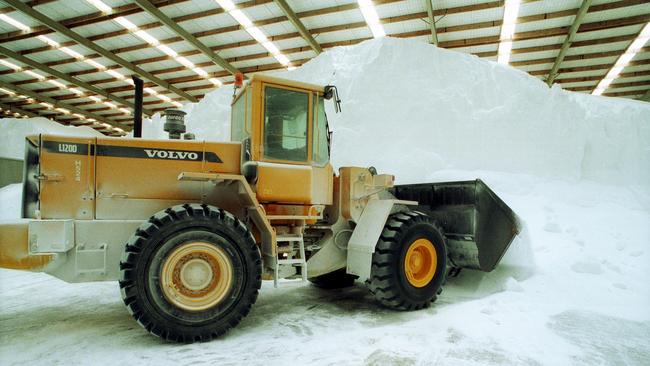ANZ: global wheat crop woes give Australian growers a boost, but fertiliser costs to rise
Northern hemisphere grain crop woes are expected to be a big boon for Australia. But see what ANZ says about fertiliser.

Further downgrades to the US, Canadian and Russian grain crops in the coming months are expected to boost demand for Australian wheat, according to ANZ Bank.
In its latest Commodity Insights report, ANZ said drought in North America had resulted in this season’s US wheat harvest being the smallest crop in nearly 20 years.
And after suffering a poor crop in 2021, the world’s biggest exporter, Russia, is likely to see a decline in plantings for 2022.
“As a result, international wheat futures have been surging recently,” the report said.
Grain production problems in the northern hemisphere couldn’t come at a better time for Australian growers, according to ANZ.
“High global grains prices are combining with the forecast for the second largest domestic wheat harvest on record to set Australian croppers up for another exceptional year,” the bank said.
“While global production remains on track to increase this year, the forecast stronger increase in consumption, combined with a global shortage in high quality milling wheat, is likely to drive strong export demand for the Australian harvest.
The ANZ said global stocks of canola had fallen by 25 per cent as a result of the Canadian drought and were expected to fall even further next year, keeping upward pressure on prices.
The bank said the world’s stocks of barley were also expected to fall, as China bought the feed grain to rebuild its pig herd after African swine fever decimated animal numbers.
Low barley production in Russia and the European Union were also impacting on stocks.
The only blight on the horizon is indications fertiliser prices could climb to their highest levels since 2008 and remain high well into next year.
In 2008, di-ammonium phosphate rose to about $1300 a tonne and urea to about $900 a tonne.
This week, The Weekly Times reported new modelling showing DAP likely to hit $1050 a tonne this month, with urea rising to $958 a tonne.

The Commodity Insights report said fertiliser prices had risen due to three main factors.
This included Hurricane Ida causing major damage to fertiliser plants in Louisiana in the US, European gas price rises rising to 14 times normal levels and Chinese state-owned fertiliser plants being asked by the central government to cease exports to minimise world prices on its own farmers.
“While most of Australia’s urea is imported from the Middle East, with most di-ammonium phosphate and mono-ammonium phosphate imports coming from China, the sizeable loss of supply from global supply chains as a result of the hurricane (in the US) has been a major contributor to fertiliser prices, as customers look to lock up supply,” the bank report said.
“So what could this mean for Australian producers, as well as for the wider food supply chain?
“On current forecasts by some industry observers, this combination of factors could see fertiliser prices remain elevated until at least the second half of 2022.”
ANZ head of agribusiness Mark Bennett said all major crops in Australia were looking at great production forecasts, with a record canola crop possible, the second largest wheat harvest and the third biggest barley crop.
“For this harvest, given the ongoing strong demand for exports, combined with the rapid growth of the domestic feedlot sector to meet the demand for red meat, it is foreseeable that much larger volumes of grain will be transported directly to their end destination than in the past, including from west to east,” Mr Bennett said.




